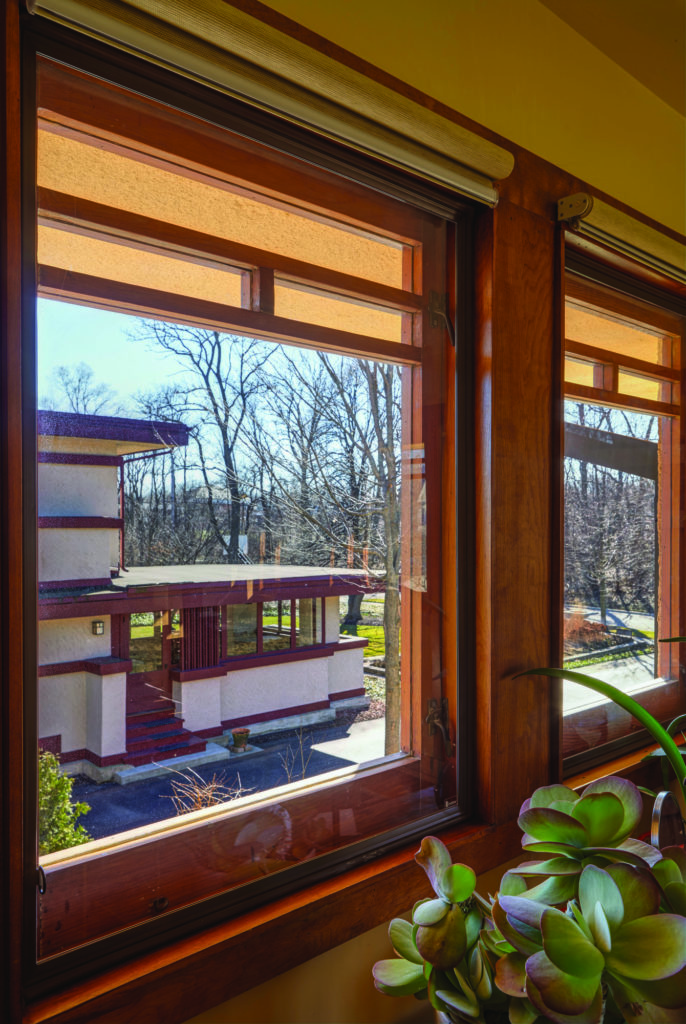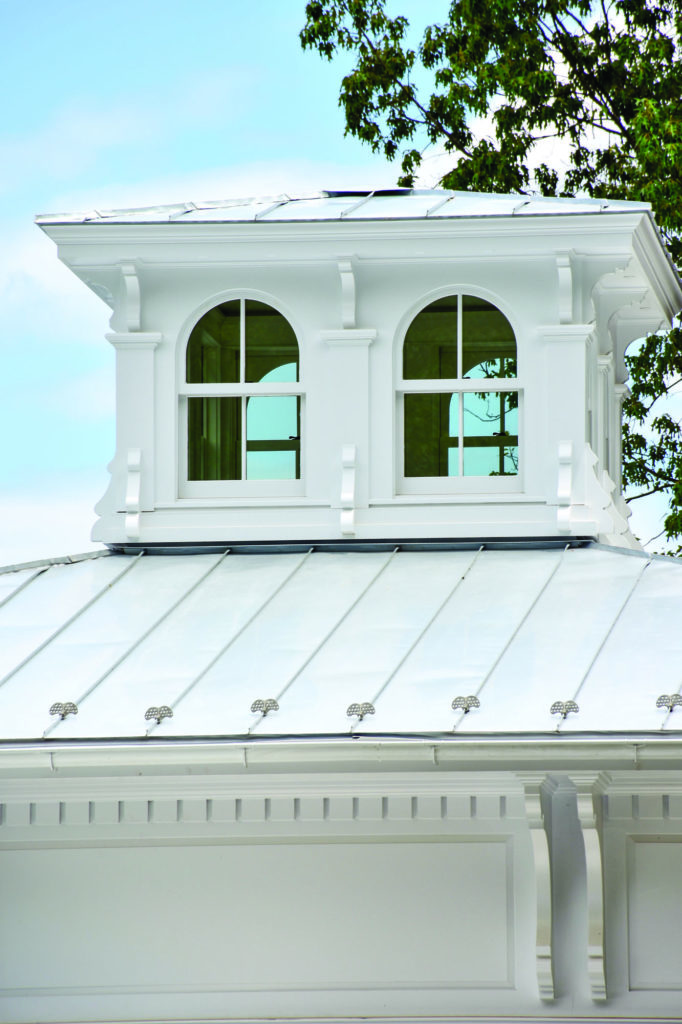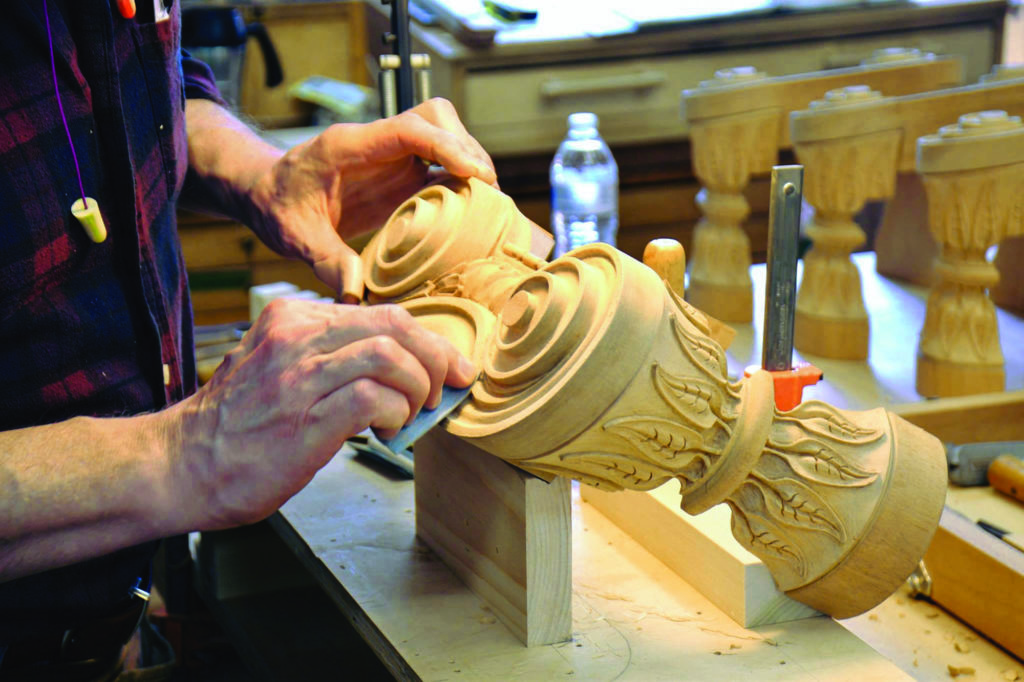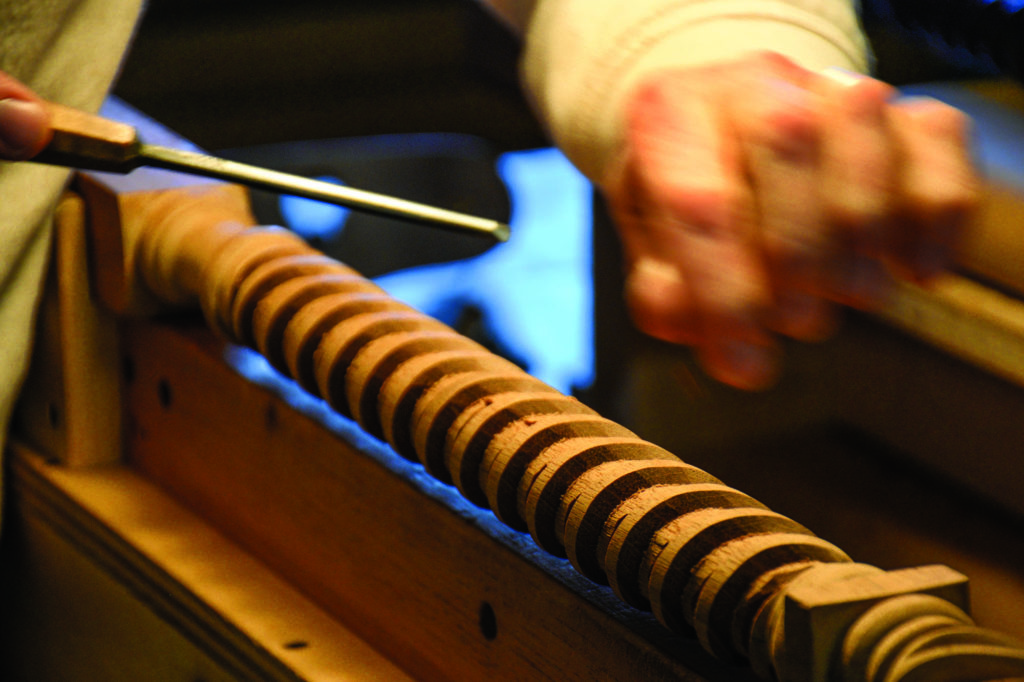Using 21st-century materials, The Cooper Group erected a massive free-span tent to cover the 17th-century Mayhew–Hancock–Mitchell house during a two-year restoration. New wood shingles were laid following the bowed and sagging lines of the time-worn roof.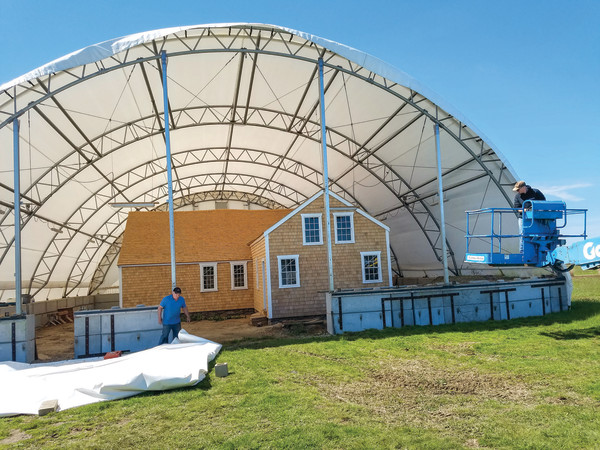
To hear OHJ readers tell it, it was possible to pull Eastlake-style walnut woodwork out of a dumpster in neighborhoods like Park Slope, Brooklyn, or Seattle’s Capitol Hill, back in the day. Finding a window installer who didn’t want to replace curved glass in a brownstone bay or add triple-track storms to Queen Anne sash? Next to impossible.
Times changed. Today there are multiple sources for restoration window glass—although it’s as challenging as ever to find a skilled plasterer, mason, or even a carpenter sensitive to period techniques. Not to mention that gut renovation is once again a threat to historic homes from coast to coast. And, in rural parts of the Northeast, houses more than 175 years old go to seed for want of an owner.
“Two hundred years from now, people will look back in horror that we weren’t able to save these houses,” says Brian Cooper, owner of The Cooper Group, a collaboration of historic-restoration craftspeople in Connecticut.
Just as the pool of buyers willing to take on the earliest houses has dwindled, it’s equally hard to find qualified workers. When Cooper first got into the business in the late 1970s, he could usually determine whether a potential hire had the right skills for restoration by looking at his or her toolbox. But not today. “You can’t tell as much about a craftsman as you could 30 years ago, because now everything is done with power tools.”
Today we’re seeing more sophisticated approaches, including when the subject is extraordinarily old, even on occasion a museum. Take an antique finishing material like a cut nail, for instance. It’s perfectly respectable for a crew member to predrill leader holes, then hammer reproduction clinch or rosehead nails in by hand. The result looks true to period, but it takes less labor to achieve it.
“The whole fastening world has changed a lot,” Cooper says, noting that it is sometimes essential to use lag bolts or other modern fasteners—where they won’t be seen—to meet modern building codes, for structural support, or both, especially when the alternative could be loss of the building.
Installation techniques are modified to save labor as well. Rather than use a bit and brace to fasten a board with lag bolts, for example, a restoration carpenter uses an impact wrench, which permits him to control the amount of pressure used: “That way the force won’t strip the head and break the fastener.”
Similar mechanical shortcuts used for structural restoration are also apparent in the construction of period built-ins and the new–old house movement. When James Stewart started working on the shop floor at The Kennebec Company more than 15 years ago, every component in the period cabinets he made was built without power tools. From stiles and rails to dovetail joints and finish sanding, “we absolutely did everything by hand,” says Stewart, who is now the owner of the company.
That had to change, or the cost of the cabinets would have become prohibitive. As with building restoration, mechanized techniques are used where they won’t show, permitting time for cabinetmakers to hand-plane and finish-sand the surfaces of drawers and doors.
Among those techniques is computer numeric control (CNC), which is now used throughout the building industry to model and to precisely cut everything from cabinet boxes to intricate inlays and compass roses in wood flooring. It has three-dimensional capabilities, too: Soapstone fabricators like Bucks County Soapstone use it to cut sinks from a single block of stone.
At Connor Mill-Built Homes, milling all the components of a period reproduction home on a factory floor is part of the business model. In a controlled environment, reasons owner Michael Connor, individual elements like brackets can be made efficiently, applied to a cornice, and then assembled as part of an exterior kit package that goes together quickly once it’s shipped to the building site.
While Connor’s homes are typically larger than the early American homes that inspired them, the proportions and details are so spot-on that the average person could easily mistake one of these new-builds for a house two centuries old.
The costs, changing building-code standards, and the availability of certain materials that inspired Connor to streamline his construction model continue to drive decision-making in the historic-restoration market as well. “If I relocate a house,” says Brian Cooper, “I have to go through the whole engineering gauntlet” to acquire the necessary building permits. “It’s usually about, How do you make an old house energy efficient?”
Not coincidentally, that usually costs more, and there is the added problem of concealing modern intrusions. Fortunately many of the latest insulating technologies—from house-wrap to high R-value, super-thin insulation—are invisible once a house is finished with period weatherboards or shingles. Cooper has also developed a new line of old house-friendly windows that are low maintenance yet offer superb energy performance.
Basic materials such as wood of certain species, cut, or length are yet another challenge, as are period fittings. Cooper says it’s still possible to go to a specific sawmill and get the exact species of timber he wants, cut rift-sawn or quarter-sawn to a desired length. On the other hand, “if I want a 18′ long board that’s 20″ wide, it’s real hard to get that.”
The same goes for matching dimensional lumber commonly available a century or two ago, which necessitates Cooper buying his own timber and sawing it to old-time specifications. And the once-vibrant salvage industry, a great source for period hardware, doors, windows, and architectural elements, is in decline. “Few people want old houses anymore. People want new houses,” says Cooper. “They think they want ‘green’ houses, even though recycling a historic house is one of the greenest things you can do.”
All of the surface finishes on these Kennebec Company cabinets were done completely by hand, but some parts out of sight were built with the aid of modern technology.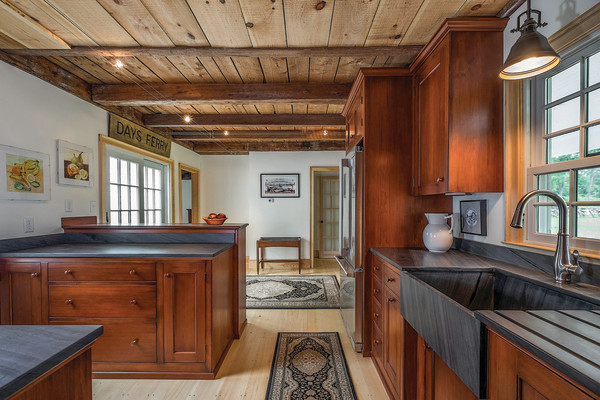
Smart and Historic
The weighted, double-hung sash window has not changed much since 1830. After years in the restoration business, Brian Cooper thought he could build a better one. He came up with a double-glazed window, called the Nantucket, made with recycled 19th-century glass on the exterior and new glass on the interior.
The result is a super-efficient window that looks historic on the outside but performs like a Thermopane (insulated window) indoors. No storm window is required and the unit includes high-quality weather-stripping, offering one of the lowest air infiltration measurements available. Additionally, the window never needs reglazing: the wood muntins are moulded without glazing or putty.
A second style, the Nor’Easter, adds an integrated storm shutter than can be operated remotely in the event of an impending storm or for security purposes. Normally invisible, the anodized aluminum shutter is rated to 200 mph. It can be operated from any location with an internet signal using a smart phone or tablet. Cooper Smart Windows.
SpacePak’s high-velocity system delivers warm or cool air from an attic unit through flexible, 2″ ductwork that snakes between studs in walls.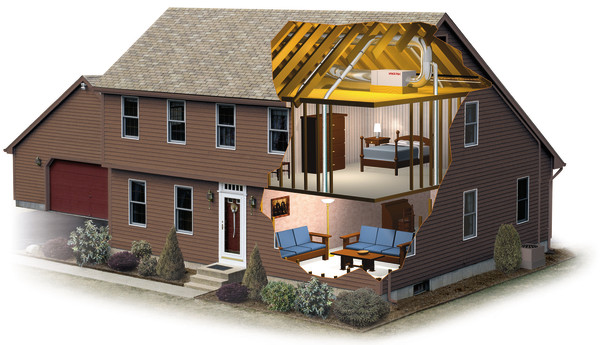
High Velocity Retrofits
Retrofitting an older home for heating, ventilation, and air conditioning (HVAC) used to mean destroying old plaster walls and other historic materials to accommodate ductwork and large air delivery vents. Surprisingly, there’s been a gentler option since 1946, when Cal McCracken started a company called Jet Heet.
Now known as SpacePak, the system pumps high-velocity air into all the rooms in a house, delivered through unobtrusive outlets. Supplied by flexible, 2″ ductwork that slips between studs in walls, it creates a gentle circulation pattern that produces relatively even heat and cooling.
“The principle of the system has not changed,” says Matt Kleszczynski, director of marketing for Mestek, which owns SpacePak. “The technology has, just due to efficiency codes. We’ve gone from a single-speed motor that used to draw a lot of electricity to a variable-speed motor that is super efficient.”
The hydronic system is also a lot greener, since it uses water rather than refrigerants for cooling. More recent innovations include modulating boilers, which use less capacity during shoulder heating and cooling seasons, and heating coils specifically designed to remove excess humidity.
While installation costs can be difficult to estimate thanks to the unknowns that lie behind walls and under floor joists, the flip side is that the finished system is all but invisible and whisper quiet. “With us, everything is hidden.”
Clinch nails rated for fire doors are slightly variable, just like the ones made two centuries ago.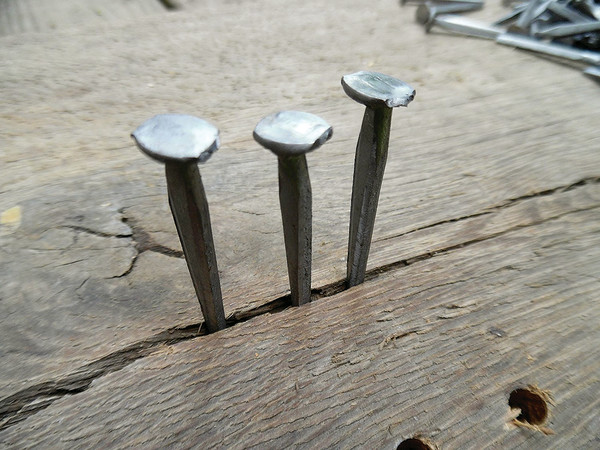
Cut Nails
Known by such picturesque monikers as clinch, clout, box, and rosehead, steel cut nails are one of the oldest technologies produced in the U.S., dating to the late 1700s. Cut nails provide superior holding power because their edges tear through wood fibers rather than splitting them. They’ve been in production more or less continuously since 1819 at one location, where amazingly, they’re still being made today. In a factory that dates to 1848, Tremont Nail produces nails very similar to those early ones. Ideal for historic restoration, more than two dozen varieties of steel cut nails are offered, standard or hot-dipped galvanized. Tremont Nail.
A Venetian carpet, loomed to a customer’s specifications for a staircase.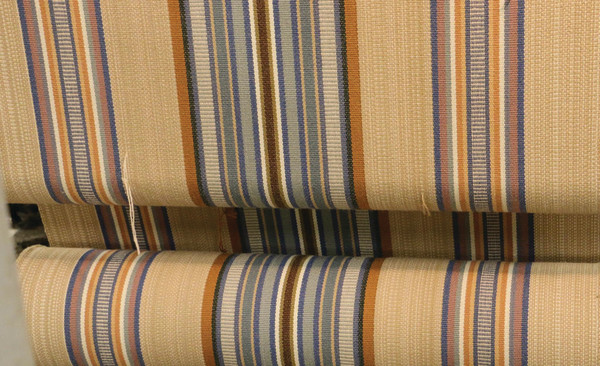
Loomed Textiles
When only an American-made historical textile will do, Thistle Hill Weavers is the place to go. Working on hand and antique looms, Rabbit Goody and her team of artisans weave customized versions of 18th- and 19th-century Venetian and figured ingrain carpets, jacquard-loomed damasks, worsteds, and silks for drapery and bed hangings, plus tassels and trims. While museums, the film industry, and clothing designers keep the studio busy, Thistle Hill is an approachable option for homeowners. Minimum order is just 18 yards. Thistle Hill Weavers.
Bendheim’s version of crown bullion—better known as bull’s-eye glass—is available in square pieces from 8″x 8″ to 12″ x 12″.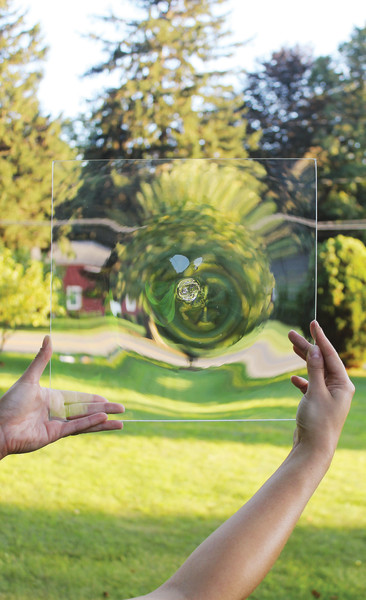
Glass for Restorations
Architectural glass with the appearance, flaws, and waviness of early glass is now available in period-specific styles. For the most exacting restorations, you can get mouth-blown cylinder glass from Hollander Restoration Window Glass, but the company also makes less expensive, thermally formed replicas as part of its Circa series. The characteristics of Circa 1700, for instance, include a slightly wavy character reminiscent of blown glass and mild surface imperfections typical of 18th- and early 19th-century windows. Also offered for later time periods (Circa 1800, Circa 1900), the glass comes in different thicknesses to match old, surviving glass.
AGW Glass offers its Old Style Window Glass in five grades, similar to how glass was categorized before 1920. American glass manufacturer Bendheim, in business since 1927, offers Restoration Glass® in styles suited to early houses (Full Restoration) and Victorian and bungalow-era homes (Light Restoration). Like Hollander, Bendheim also makes crown bullion (bull’s-eye) glass.
Old Style Window Glass from AGW Glass (below) has the wavy appearance and imperfections of antique, aged glass.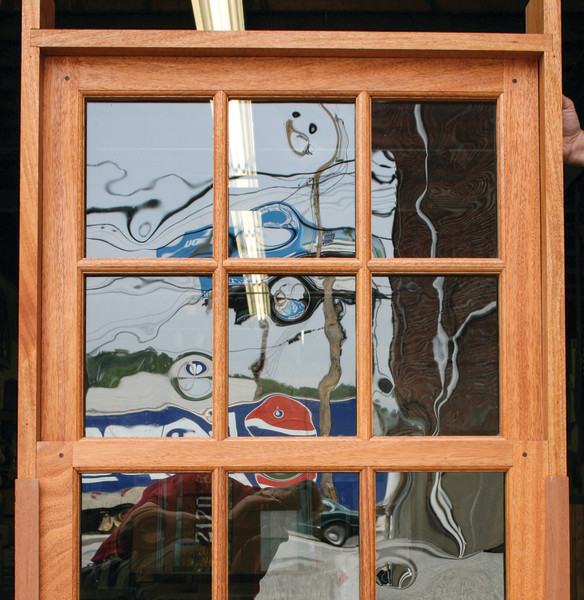
Breakthrough Repair & Retrofit Products
Filling the Void
Save original door frames, stairs, and columns crafted from irreplaceable
old-growth wood by repairing them with WoodEpox, a shrink-free adhesive putty wood replacement compound. The material bonds permanently with high strength to most surfaces. Two-pint order: $39.95. Abatron, (800) 445-1754.
More than a Furniture Polish
A blend of beeswax, carnauba wax, mineral oil, and orange oil, Feed-N-Wax polish and conditioner enhances the beauty and grain in wood, especially in newly restored finishes. Silicone and linseed-oil free, it comes in a 16-ounce size. $8.99. Howard Products, (805) 227-1000.
Get the Lead Out
Encapsulate or remediate lead on painted surfaces with Blue Bear Lead Based Paint Stripper (formerly Lead Out). Noncaustic and 100% biodegradable, its patented molecular bonding system renders lead non-hazardous for safe removal and disposal. $39.95 per quart. Franmar, (800) 538-5069.
New Underlayment
POL-E-BASE is a self-adhering, peel-and-stick roll of modified bituminous resins reinforced with polyester fabric. It’s ideal as an underlayment for cold process asphalt or acrylic roof coating. The material comes in 67′-long rolls in three widths. $20.95 to $178.50. Specification Chemical, (800) 247-3932.
Climate Control
New single and multi-zone mini-split heat pumps provide both heating and cooling for year-round comfort. Matched with wall-mounted indoor air handlers, the mini-splits can deliver from 9,000 to 45,000 BTU per hour, and can serve up to five zones. Prices vary. Rheem, (800) 432-8373.
Keep out drafts without blocking the beauty of original windows with standard-grade interior storms like these shown on the Frank Lloyd Wright-designed Ross House. Courtesy of Indow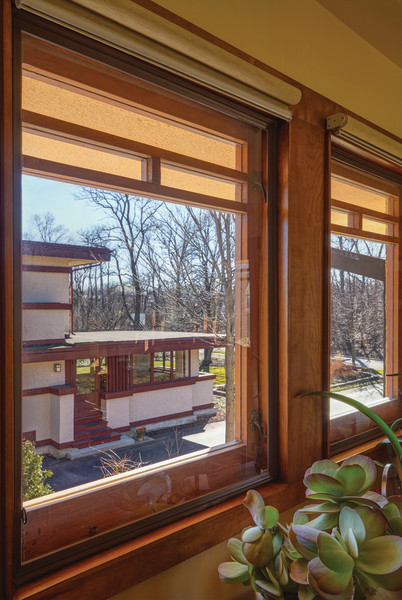
Clear Comfort
Keep out drafts without blocking the beauty of original windows with standard-grade interior storms like these shown on the Frank Lloyd Wright-designed Ross House. They’re held in place with a patented compression tube. Indow Windows, (503) 284-2260.



